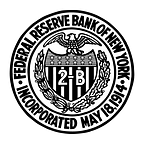Key Takeaways from President Williams’s Speech on the Economic Outlook and Monetary Policy
Judy DeHaven, CEO Communications
On Tuesday, May 10, New York Fed President John Williams spoke about inflation, the economic outlook, and monetary policy at the 2022 International Economic Symposium co-hosted by the National Association for Business Economics and the Deutsche Bundesbank.
He said:
“The challenge for monetary policy today is clear: to bring inflation down while maintaining a strong economy.”
“We have an advantage over previous inflationary episodes: Our monetary policy tools are especially powerful in the very sectors where we see the greatest imbalances and signs of overheating — such as durable goods and housing.”
“Although we are facing highly unusual and challenging circumstances, I am confident we have the right tools to achieve our goals.”
In his remarks, President Williams said the Federal Reserve is committed to fulfilling its dual mandate of price stability and maximum employment. “With the unemployment rate back to very low pre-pandemic levels, and a variety of indicators showing the labor market is very strong, maximum employment has been achieved,” he said. “But, with inflation rising to unacceptably high levels, we are far from our longer-run goal of 2 percent inflation.”
He said there are three major supply-demand imbalances that are contributing to an overheating economy and high inflation: the effects of the pandemic, which have significantly increased demand while adversely affecting supply in certain categories of spending, particularly durable goods and housing; the labor market, where demand far exceeds supply; and global supply-chain bottlenecks, which are further constrained by the war in Ukraine and lockdown in China.
“With clear signs of demand exceeding supply and an economy running too hot, the primary focus of monetary policy is to turn down the heat and restore price stability,” President Williams said.
The Federal Open Market Committee (FOMC) is taking “strong actions to restore balance and bring inflation down,” he said. So far this year, the FOMC has raised the target range for the federal funds rate by 75 basis points, including a 50-basis-point increase announced last week. President Williams said he expects “the FOMC will move expeditiously in bringing the federal funds rate back to more normal levels this year.”
Higher interest rates will reduce demand in rate-sensitive sectors “to levels better aligned with supply,” he said. “This will also turn down the heat in the labor market, reducing the imbalance between job openings and available labor supply.”
The FOMC also announced last week that it will begin reducing the size of its holdings of U.S. Treasury securities and agency debt and agency mortgage-backed securities, which will play out over the next few years. President Williams said these monetary policy actions will also help reduce demand and restore balance to the economy.
President Williams said he expects core inflation, as measured by the personal consumption expenditures index, to fall to nearly 4 percent this year and to about 2½ percent in 2023, before further declining “close to our 2 percent longer-run goal in 2024.”
He also expects the labor market and economy to continue to show strength and resilience, with GDP growth around 2 percent this year and the unemployment rate remaining close to its current low level.
“Reducing inflation to our longer-run goal while keeping the labor market strong is the challenge of our time,” President Williams said. “We have the right tools, and we will use them to meet this challenge.”
The views expressed in this post are those of the contributing authors and do not necessarily reflect the position of the New York Fed or the Federal Reserve System. New York Fed content is subject to our Terms of Use.
